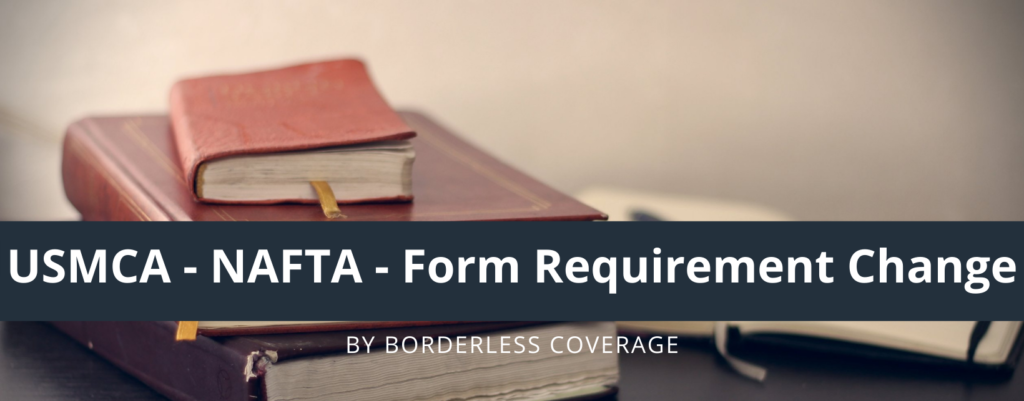Blog
USMCA – NAFTA – Form Requirement Change

On January 1st, 1994, the United States, Canada, and Mexico signed the North American Free Trade Agreement (NAFTA). Tariffs were eliminated progressively and all duties and quantitative restrictions, with the exception of those on a limited number of agricultural products traded with Canada, were eliminated by 2008. To qualify for this preferential tax treatment, exporters had to accurately complete the NAFTA Certificate of Origin Form 434 and the importer had to possess a Certificate of Origin at the time the preferential tariff claim was made. Products (valued over $1,000 USD) had to also be classified utilizing the Harmonized Commodity Description and Coding System. The process for completing the NAFTA Certificate of Origin form has historically been a very manual process.
However, after more than 25 years of the agreement, the legal instrument required a thorough update. With the conviction of bringing NAFTA to the reality of the 21st Century, in 2017, a negotiation process began. After considerable arbitration, the three countries finally reached a new agreement in December of 2019. This new instrument is called the United States-Mexico-Canada Agreement (USMCA) and it was implemented on July 1, 2020.
Under USMCA, Form 434 is no longer required. To qualify for preferential tax treatment, importers are now only required to furnish nine minimum data elements as outlined in Chapter 5 of USMCA in any format as opposed to following the more detailed NAFTA form. This along with the de minimus increases to 10% and updated North American digital trade law has greatly encouraged new trade and investment opportunities.
At Borderless Coverage, our team of business minded cross border supply chain consultants, economists, lawyers, insurance experts, and global trade agreement negotiators are here to not only get you into compliance with the new USMCA customs procedures, but to digitally update your disciplines, optimize your cross border supply chain, and capitalize on USMCA.
